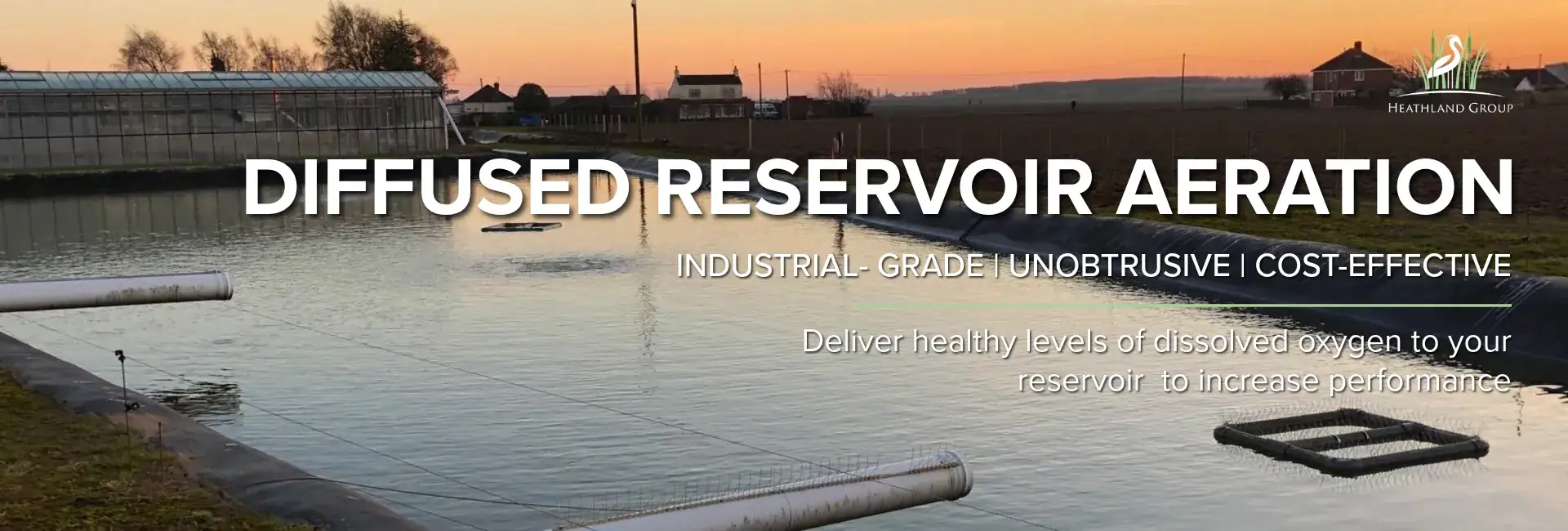Free consultation
Call us on: 0333 0384 103

Reservoirs often suffer from oxygen depletion and thermal stratification, leading to poor water quality, algae blooms, and fish kills. Our diffused aeration systems work by evenly distributing fine bubbles of air at the reservoir bottom, promoting oxygen transfer and circulation to maintain optimal dissolved oxygen levels throughout the water column.
With decades of expertise in water management and reservoir solutions, Heathland Group Ltd offers reliable, sustainable, and effective aeration systems designed to safeguard your water resources. Our commitment to innovation and customer satisfaction makes us the trusted choice for reservoir aeration in the UK and throughout the world.
Reservoirs can be affected negatively by warmer weather. During the summer, reservoirs can suffer from thermal stratification, which is when water becomes divided into layers as shown below. The bottom layer of the reservoir will contain cool, oxygen-depleted water whilst the surface layer of the reservoir will contain warmer oxygen-rich water. These two layers are separated by the thermocline that prevents the two from mixing because of differences in the water density.
A diffused aerator pumps air through the diffuser membranes, which then travels to the reservoir surface in the form of millions of tiny bubbles. When these bubbles travel up through the thermal layers they entrain the colder water and this is then carried to the surface layer, where it becomes naturally oxygenated. This colder water circulates and is replaced by warmer water providing complete circulation and balanced temperature.
Circulating and aerating from the reservoir base upwards also releases toxic gases that normally become trapped underneath the thermocline layer. This provides a balanced habitat for aquatic life. This diffused aeration process creates aerobic conditions near the reservoir bed and then the microbial process can naturally break down nutrients that might otherwise be used in the production of noxious aquatic weeds and algae.

Looking for a surface-mounted alternative? Explore our Floating Reservoir Aeration Systems for flexible, easy-to-install oxygenation solutions.
Contact us for a free, no-obligation reservoir aeration consultation. Let Heathland Group design the perfect solution to increase dissolved oxygen, restore ecological balance, and safeguard your reservoir investment.
Heathland Group proud to be ISO9001:2015 registered. which means the management system we use to design, manufacture, supply and install our water fountains and aeration equipment has been externallly assessed and approved by an independan body.